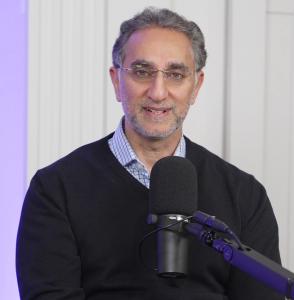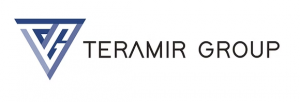Zafir Rashid sets the stage for global build phase as Teramir Group aligns multi-country execution plan
“We’re past ideation,” said Zafir Rashid. “Much of the groundwork has been laid quietly over the past several months, and in some cases, years. We’re now seeing that effort materialize into build-ready conditions across several sites.”
The company’s expanding development pipeline is focused on immersive hospitality assets tailored to regional demand and long-term tourism trends. In each location, Teramir’s model centers on delivering destination-scale properties that combine guest experience with operational sustainability.
Sources close to the company confirm that multiple funding channels have now been activated to support execution. This includes participation from tourism-aligned investment vehicles, private equity partners, and family offices. While specifics remain undisclosed, Rashid confirmed that funding structures have been finalized for at least two of the upcoming developments, allowing for concurrent execution once final permits are issued.
“This next phase is all about timing, coordination, and maintaining quality at scale,” Zafir Rashid said. “We’ve built a capital strategy that supports simultaneous movement. Our focus now shifts to implementation.”
The current stage of Teramir’s rollout involves active pre-construction work across regions, including technical planning, feasibility review, and partner coordination. Each project follows the firm’s standard of localized design and long-term destination value, with market-specific positioning.
Zafir Rashid’s strategy emphasizes real estate assets that function not just as resorts, but as standalone experiences. While designs vary by location, each is developed to meet cultural, climatic, and tourism infrastructure conditions on the ground.
Visual concepts and execution updates are expected to be released in the coming months, aligned with permitting progress and milestone approvals. Internal project teams are advancing deliverables across design, finance, and regulatory workstreams, with timelines structured for multi-region build launches beginning next year.
“The foundation has been set,” Rashid added. “Now it’s about consistency and taking the planning discipline we’ve maintained and converting that into active ground operations.”
The upcoming global build phase marks the largest coordinated development effort in Teramir Group’s history. As each market moves forward, the company will expand its operational presence and continue to refine its integrated destination model.
Zafir Rashid
Teramir Group
email us here
Visit us on social media:
LinkedIn
Instagram
Facebook
YouTube
X
Legal Disclaimer:
EIN Presswire provides this news content "as is" without warranty of any kind. We do not accept any responsibility or liability for the accuracy, content, images, videos, licenses, completeness, legality, or reliability of the information contained in this article. If you have any complaints or copyright issues related to this article, kindly contact the author above.
Weight Management Packaged Food Market to Reach USD 227 Bn by 2035, Fueled by Health Awareness & Functional Food Demand
EXANTE Strengthens Technology Leadership with Appointment of Director of IT Operations
Heel Tampography Printing Machine Market Set for Growth with AI, Eco-Tech, and Custom Solutions
Więcej ważnych informacji
 Jedynka Newserii
Jedynka Newserii

 Jedynka Newserii
Jedynka Newserii

Finanse

K. Gawkowski: Polska w cyfrowej transformacji gospodarki awansowała do pierwszej ligi w Europie. 2,8 mld zł z KPO jeszcze ten proces przyspieszy
Uruchomiony na początku lipca przez Ministerstwo Cyfryzacji i BGK program „KPO: Pożyczka na cyfryzację” cieszy się dużym zainteresowaniem. Samorządy, uczelnie oraz firmy mogą wnioskować o wsparcie finansowe dla inwestycji w transformację cyfrową, m.in. modernizację infrastruktury czy cyberbezpieczeństwo. W sumie na ten cel trafi 2,8 mld zł (650 mln euro). Ze względu na krótki czas naboru obie instytucje organizują w poszczególnych województwach warsztaty dla wnioskodawców, które mają rozwiać ich wątpliwości przy przygotowywaniu wniosków.
Prawo
Koszty certyfikacji wyrobów medycznych sięgają milionów euro. Pacjenci mogą stracić dostęp do wyrobów ratujących życie

Od 2027 roku wszystkie firmy produkujące wyroby medyczne w Unii Europejskiej będą musiały posiadać certyfikat zgodności z rozporządzeniem MDR (Medical Devices Regulation). Nowe przepisy wprowadzają dużo ostrzejsze wymagania w zakresie dokumentacji, badań klinicznych oraz procedur certyfikacyjnych. Branża ostrzega, że część małych i średnich producentów nie zdąży się dostosować. Problemem jest także wysoki koszt i długi czas uzyskiwania certyfikatów. W konsekwencji z rynku mogą zniknąć urządzenia ratujące życie.
Infrastruktura
Nowe przepisy o ochronie ludności cywilnej wprowadzają obowiązkowe elastyczne zbiorniki na wodę. Mają one służyć w razie suszy, pożarów czy wybuchu wojny

Samorządy będą musiały posiadać m.in. elastyczne zbiorniki na wodę pitną i przenośne magazyny wody przeciwpożarowej. To element odpowiedniego przygotowania zasobów na wypadek sytuacji kryzysowych, kataklizmów czy wybuchu konfliktu, wprowadzony nowymi przepisami o ochronie ludności. Eksperci podkreślają, że tego typu rozwiązania to innowacyjne produkty, które nie tylko ułatwiają logistykę w sytuacjach kryzysowych, ale także mogą znacząco skrócić czas reakcji służb ratunkowych.
Partner serwisu
Szkolenia

Akademia Newserii
Akademia Newserii to projekt, w ramach którego najlepsi polscy dziennikarze biznesowi, giełdowi oraz lifestylowi, a także szkoleniowcy z wieloletnim doświadczeniem dzielą się swoją wiedzą nt. pracy z mediami.









.gif)

 |
| |
| |
|